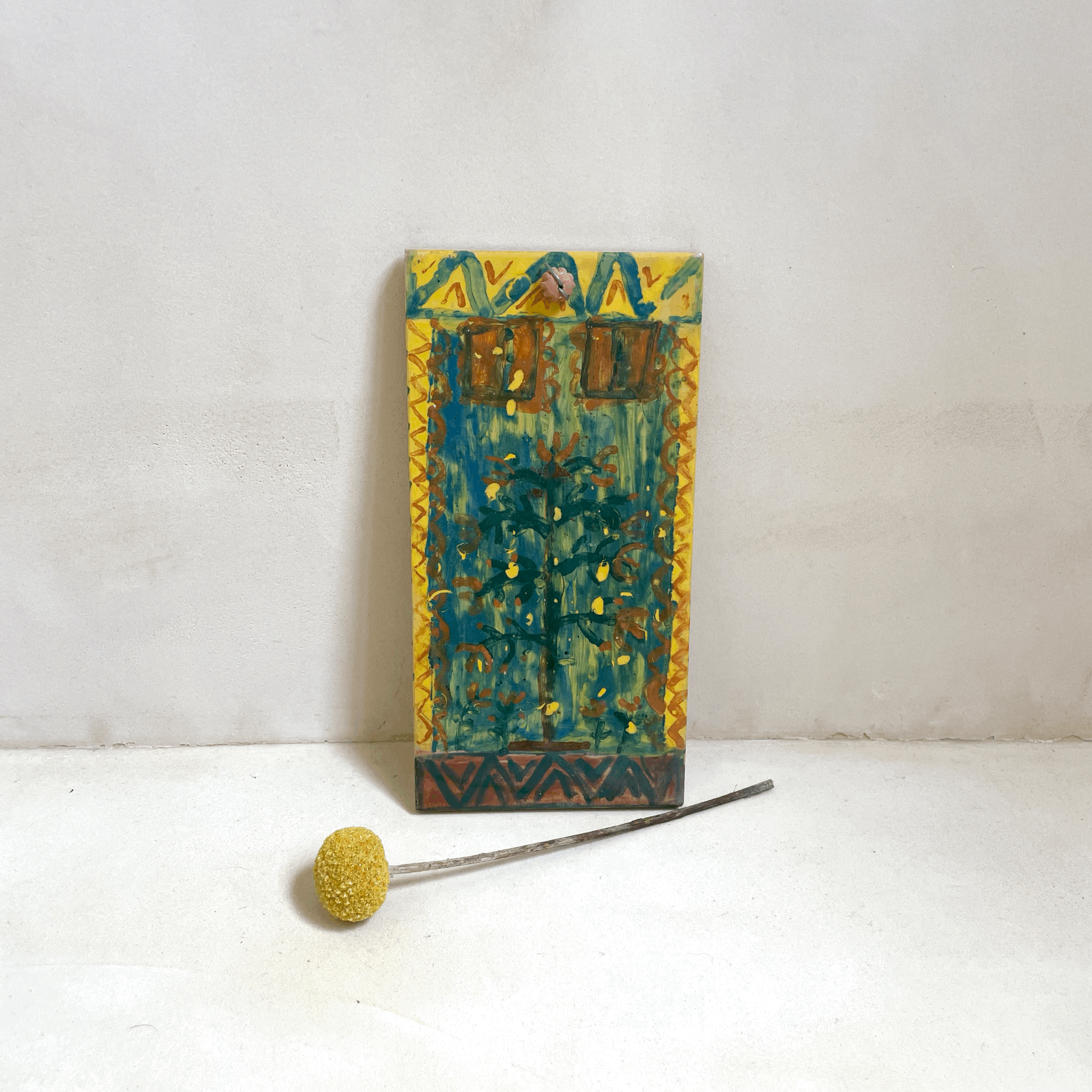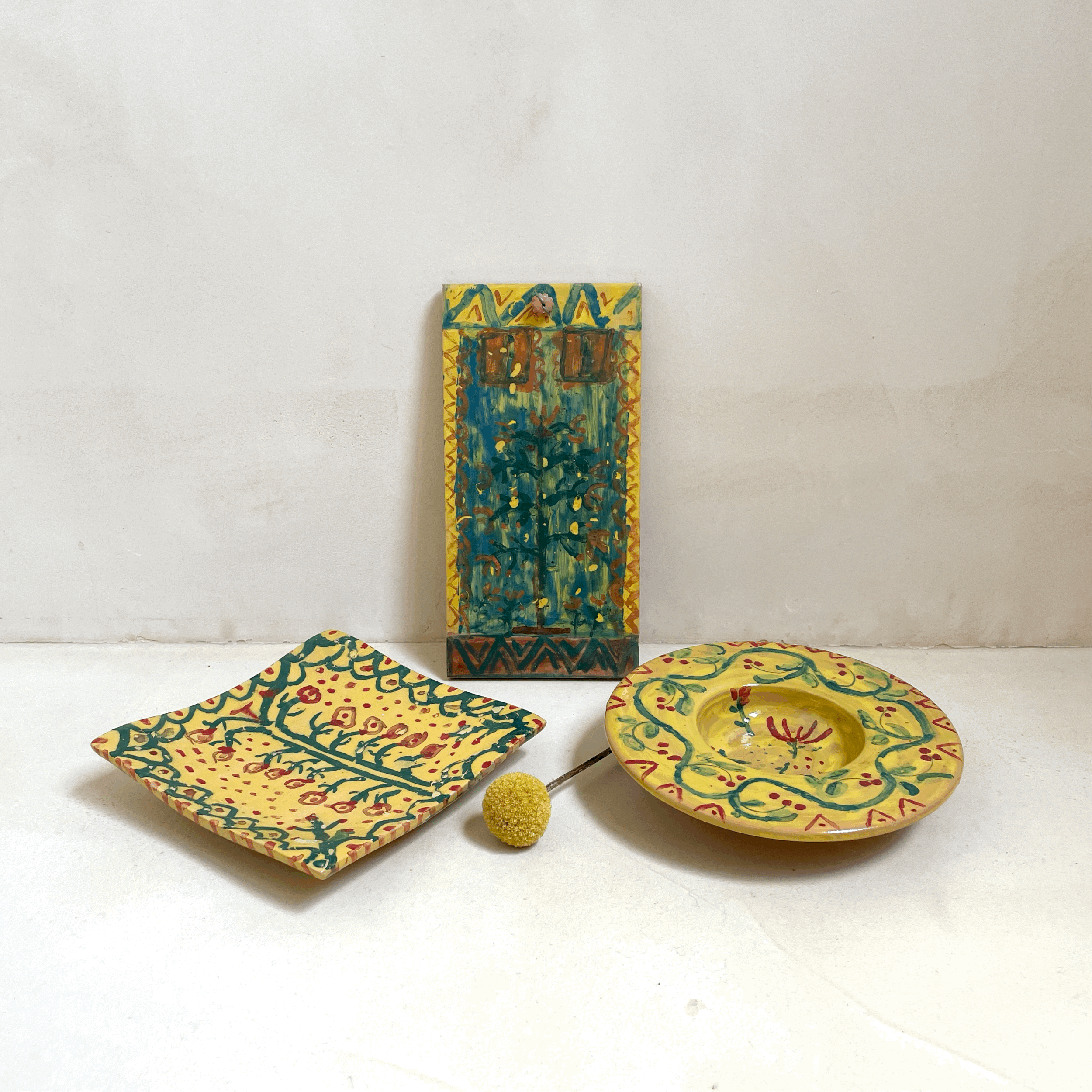Arbre de façade, Crocifissa (25)





Arbre de façade, Crocifissa (25)
Arbre de façade
Crocifissa Nobile (1928-2018)
Demi-carreau en faïence à décor aux oxydes et émaillage plombifère
Marqué FA et NC au revers, attache d’origine
Très bon etat, bulles de cuisson
H 20 x L 10 x P 0,9 cm
Tree of the house
Crocifissa Nobile (1928-2018)
Earthenware half-tile with oxide decoration and lead glazing
Marked FA and NC on reverse, original brace
Very good condition, bubbles of firing
H 20 x W 10 x D 0,9 cms
Pour en savoir plus à propos de Crocifissa Nobile, une présentation se trouve ici
Pour en savoir plus à propos de Crocifissa Nobile, une présentation se trouve ici
From rawvision.com
The controversy surrounding the exact definition of Outsider Art and allied fields has been going on ever since awareness of the phenomenon began so here we try to clarify the different aspects.
The development of the awareness of forms of creative expression that exist outside accepted cultural norms, or the realm of “fine art”, began with the researches of psychiatrists early in the century.
The work of Dr Morganthaler documented his patient Adolf Wolfli, a genius who produced countless thousands of works from a small cell in his Swiss asylum. Dr Hans Prinzhorn collected thousands of works by psychiatric patients and his book “Bildernerei der Geisteskranken” (Artistry of the Mentally Ill), published in 1922 became an influential work amongst Surrealist and other artists of the time.
One artist who was particularly affected by the works Prinzhorn presented was Jean Dubuffet. Together with others, including Andre Breton, he formed the Compagnie de l’Art Brut in 1948 and strove to seek out and collect works of extreme individuality and inventiveness by creators who were not only untrained artists but often had little concept of an art gallery or even any other forms of art other than their own.
Dubuffet’s concept of Art Brut was of works that were in their “raw” state, uncooked by cultural and artistic influences. He built up a vast collection of thousands of works, works which bore no relation to developments in contemporary art and yet were the innovative and powerful expressions of a wide range individuals from a variety of backgrounds.
Art Brut was Jean Dubuffet's original term for the works that he collected and revered; later adopted by the Collection de l'Art Brut at Lausanne. Art Brut means "raw art". Raw because it is "uncooked" or "unadulterated" by culture. Raw because it is creation in its most direct and uninhibited form. Not only were the works unique and original but their creators were seen to exist outside established culture and society. The purest of Art Brut creators would not consider themselves artists, nor would they even feel that they were producing art at all. Art Brut is visual creation at its purest – a spontaneous psychic flow from brain to surface. (examples: Aloïse Corbaz, Carlo Zinelli, Madge Gill, Johann Hauser, Adolf Wölfli)










